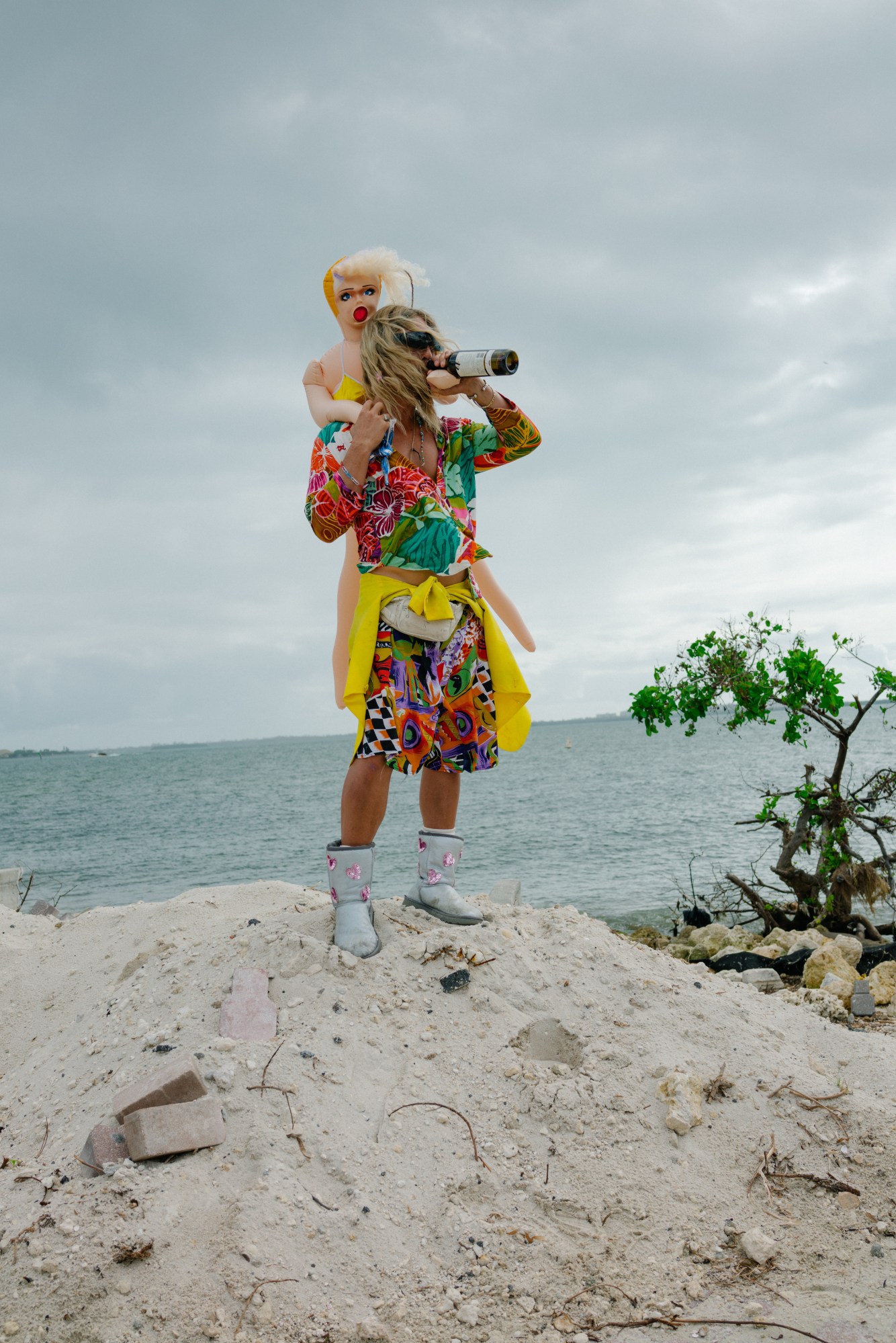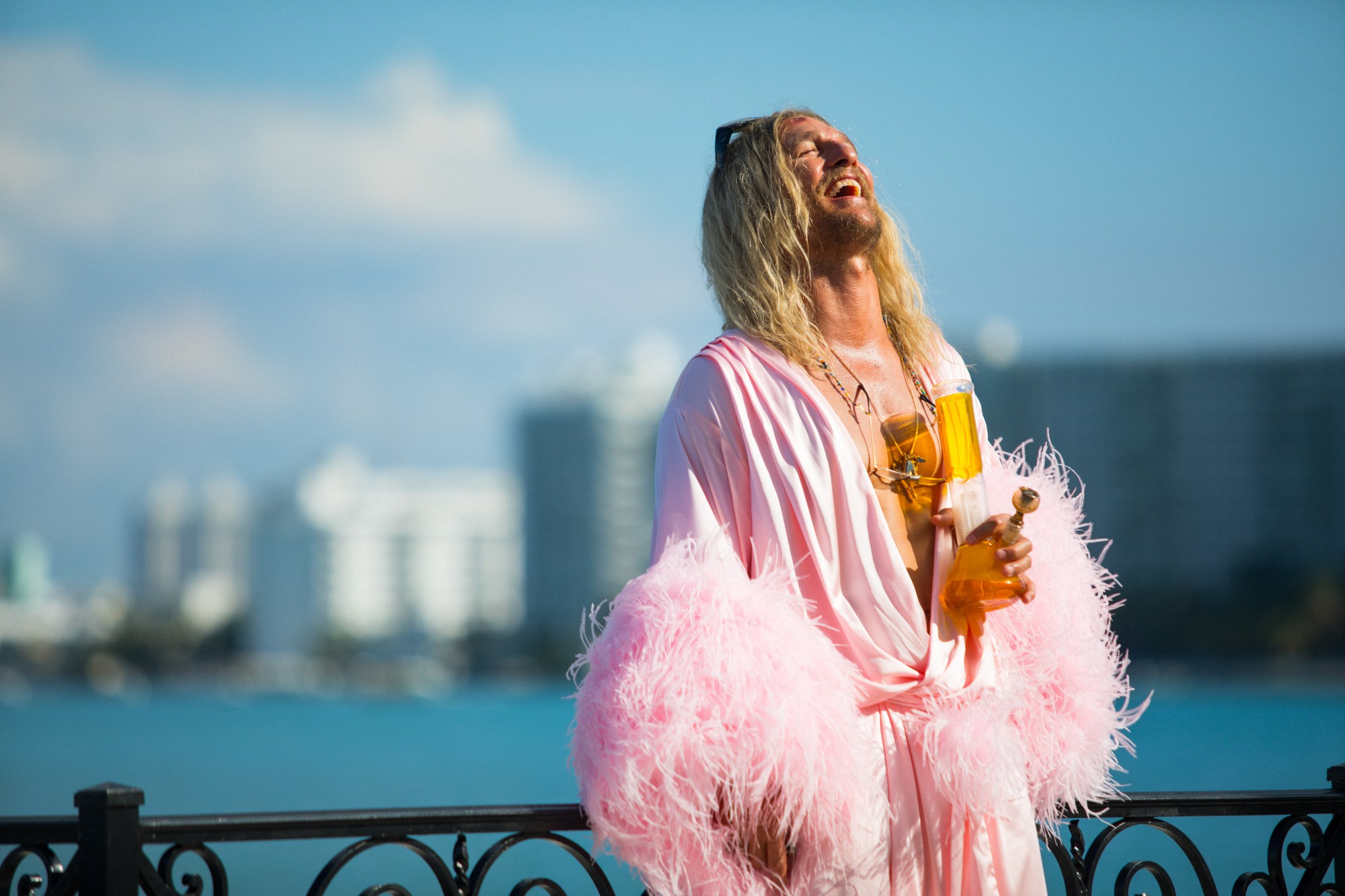Heidi Bivens is the costume designer responsible for The Beach Bum’s gorgeously trashy ensembles — Matthew McConnaughey’s character Moondog in matching Hawaiian shirts and shorts, Isla Fisher in Pucci, and Zac Efron in a studded denim vest with very dubious facial hair. The film, a Neon and Vice Studios production, follows Moondog through a midlife crisis, enabled by vast amounts of marijuana. This is Bivens second time working with Harmony Korine, having nailed his Florida-chic aesthetic on 2012’s Spring Breakers. Bivens came to costume design via styling, a transition she credits for her eagle eye for detail and encyclopedic knowledge of fashion — especially if it’s 90s skate fashion, which she used to great effect on Jonah Hill’s Mid90’s. i-D talked to Bivens about possibly originating the Hawaiian shirt craze, working with Korine, and how a 90s movie now qualifies as a period piece.
How did you first came to work with Harmony?
We have a lot of mutual friends in common, since the 90s in New York, but I actually never knew him until I worked with him on Spring Breakers. I went down to Nashville where he was living and I interviewed for the job, and I think he was confident that we could have a short hand and that we were on the same page creatively.
I imagine having that short hand is really important.
I think as a director, you’re pulled in so many different directions, people are always asking for your approval and your opinion, and you’re having to sign off on so many elements regarding the filmmaking that I find a team of people, a crew, department heads who you trust, who you know are going to help you fulfill your vision. I think as a director, that is the ultimate.
For The Beach Bum , what was the brief? We’ve seen a lot of the matching Hawaiian print suits on the runway!
Well I actually didn’t look at runway for that, and then I like to think that there’s this creative zeitgeist. I started noticing after we shot that there were some similarities there. For anything that Harmony does, he doesn’t want me to look to fashion for inspiration. To create something original, especially a world that is in his brain.
I think he always prefers for us to extract from inspiration that isn’t too derivative of anything else and so I get a lot of inspiration from real-life people who exist. From really eccentric characters, to art and fashion or entertainment world. Just real people… there’s this guy, his name’s Leslie, and he cross-dresses and he’s this really eccentric guy that exists in the world and lives in Austin. I think Matthew lives in Austin, so it’s in Matt’s hometown, and that was a coincidence, but this guy Leslie, for example, was a big inspiration. Just sort of this randomness in how he would put things together.
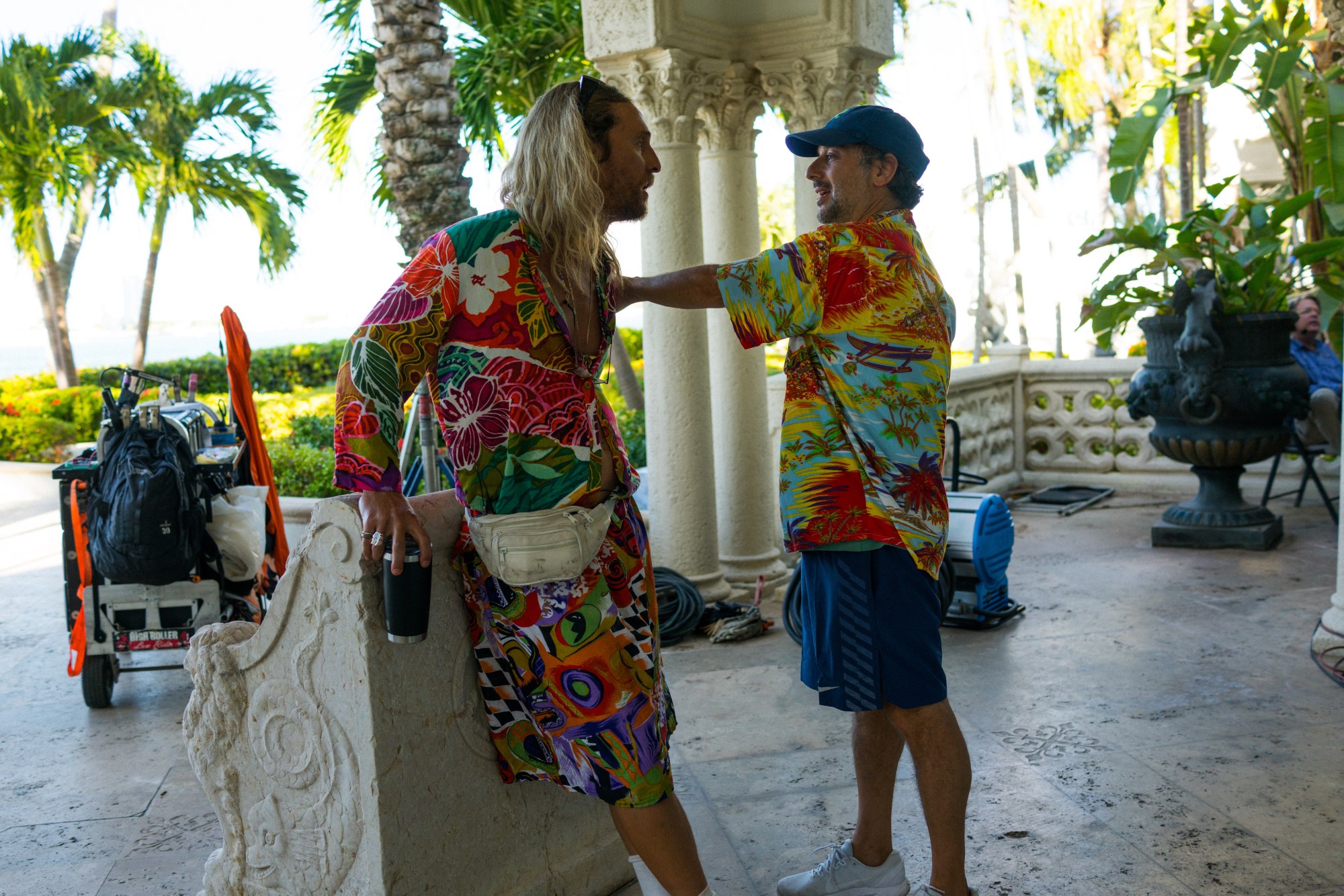
Where did the Hawaiian suits come from?
What Moondog wears in the movie, that inspiration came from a kid’s set. A kid’s matching Hawaiian style shirt and short set. And so then I started looking for stuff that existed in the world, this idea of matching sets and at the time, I couldn’t find anything anywhere. I found like a random set… from Amazon in China, or something.
Lovely.
When I got it in the mail, it was completely flammable, it was the most uncomfortable fabric ever felt. My point being that I think this idea of this man’s short set at that time when we were shooting, it wasn’t around. So I had those sets made for him, and then right after the film, we started seeing brands doing those sets.
Right.
And when stuff like that happens, I never think “oh, that’s because of the paparazzi shots of the film”, or “that’s because of this”, I think it’s the ether. I really do, because there have been so many times in my career as a stylist, where I’m looking for something that I want, whether it’s for a client or for an editorial, or for film, and I’m doing costumes, and I can’t find it. It doesn’t exist, and I can’t find it anywhere, and I think to myself, it should exist, but I can’t find it. And then, you know, eight months, 12 months later, there it is.
So, I think that adds to this idea of the creative ether. And I think my larger point is just that I don’t know that I would ever feel comfortable to say, “oh this trend exists because of the work I did.”
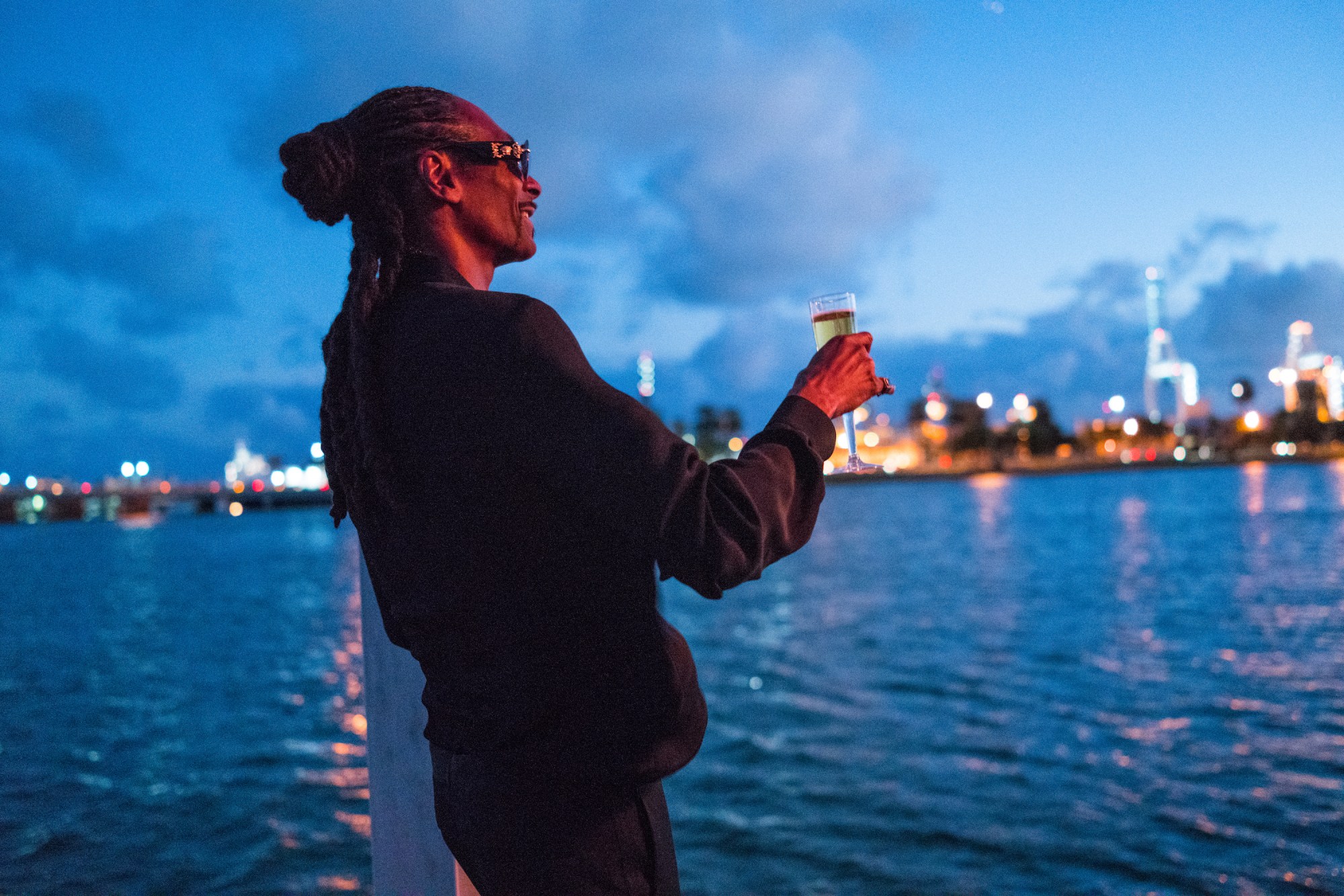
What was it like working with the cast? They all looked so deranged and vaguely dirty in the film, and I wonder what the atmosphere was like on set and kind of your interactions with the various characters.
I think that for me, in terms of the process, it has so much to do with the casting, so although I’m visualizing when I’m reading the script for the first time, unless I know, or until I know who is going to play each role, it’s hard for me to have a really concrete idea of what direction I want to take it in. So once the cast is established and confirmed, then I’m able to really start working on the look. Sometimes actors actually will come in and they’ll want to collaborate and other times they just want to be told what you think and what the director thinks.
I mean, Snoop didn’t even do fittings. I just had clothes for him and he just wore what I set for him at. I mean, that was a dream.
How much of it was custom created by you? Was it just the sets? Or like Zac Efron’s various bits and pieces are quite unique to say the least.
So, with approaching costume design for modern film in general, I like to have this balance of being able to build original pieces and costumes, but not just for the sake of doing it because if it makes more sense to use existing things in the world to make it feel more real, and not too costumey. I think there has to be a balance.Some of the stuff that we used on Moondog was vintage.
And designer.
Minnie, she wears this Pucci dress in one scene, she has a lot of money, she comes from money, she wears a Cavalli dress, so for me, just in terms of status, it was important to communicate to the audience that she was wealthy and has money, and so one of the ways to do that is with designer labels
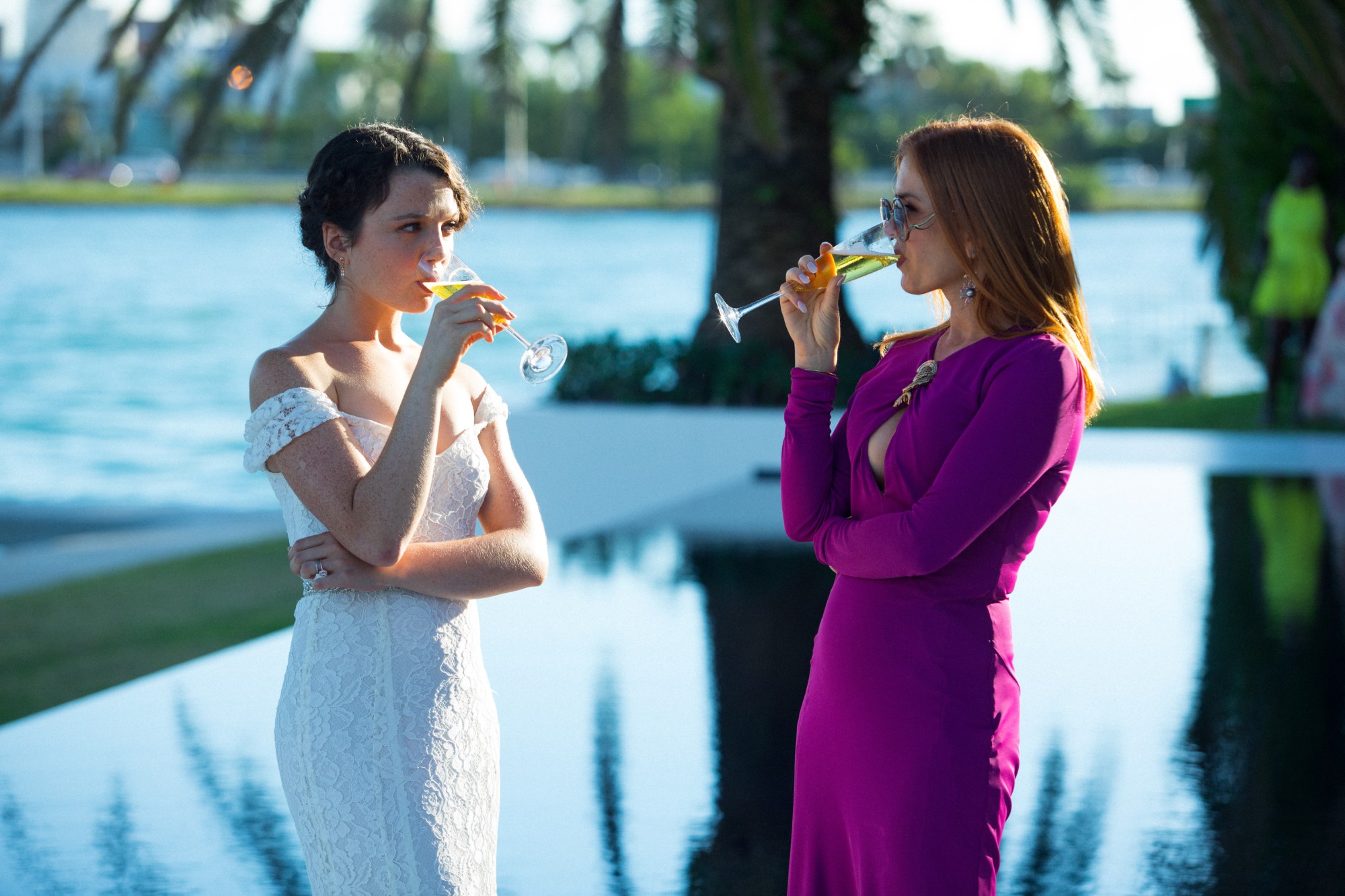
I know you also did Mid90s which I enjoyed immensely, immensely.
Oh, thank you.
Was it weird that a 90s film is now a period piece?
It’s interesting this idea of Mid90s being a period piece with a costume, because the majority of the costumes are jeans and t-shirts. And so, to your average person, watching that movie who doesn’t know about that era of skateboarding and isn’t familiar with the brands it might seem like just jeans and t-shirts.
So much thought went into which brands, and who gets to wear which brands. My main objective is that all the skaters that grew up during that time would watch the film and know that I got it right.
Yeah.
And not have any real criticism. There’s a reason why skaters rhymes with haters.
Never a truer word has been said!
Well I think Jonah is gonna have a very long career as a director. I’m excited to see what he comes up with next. To think that this is just the beginning of a lot of stories that we’re gonna see from him.
I was so thankful that Jonah gave me the opportunity and trusted me. I mean, he knew I would nail it because that was my time. I even had all my skate magazines from 94 and 95 at my mom’s house, which I used for research, so I think he had reasons to trust me. It wasn’t like out of the blue. It’s so great when someone will give you an opportunity to do something you haven’t done before.
What are you working on next?
I’m doing this HBO show, Euphoria… I just worked on a Miu Miu film. It’s one of their women in film series. They’re doing such a great job supporting women filmmakers. It’s directed by Hailey Benton Gates. She wrote and directed it. It’s called Shako Mako and it’s online right now.
Seeing Hailey direct on set was very inspiring to me, in so much, that after that job, I was like, I could do this. I went to school for filmmaking, I would like to my hand at directing and I have been writing, some stuff I would like to direct. Seeing all the women filmmakers who are forging their own paths and creatively stepping up, it’s brilliant. So inspiring to me personally. I think hopefully there will be a time very soon, where I’ll be doing more than costumes on set.
